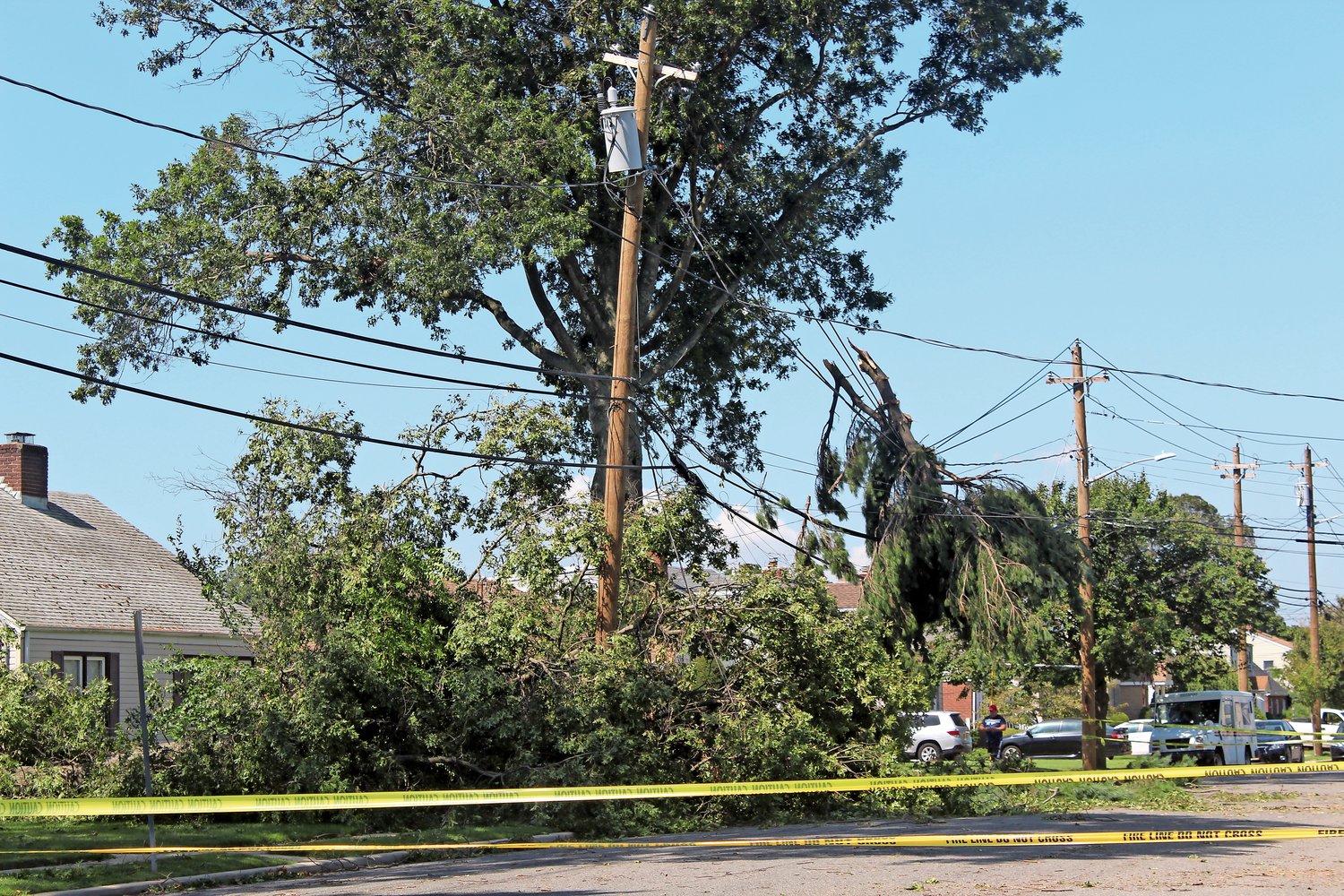Officials seek utility reforms following Isaias
Heidi Goeb called PSEG nearly 40 times, by her count, over the six days that she did not have electricity following Tropical Storm Isaias, but kept getting disconnected. A recorded voice would tell her to report the issue on the utility’s website, which wasn’t working.
The utility’s outage map showed that only three people on 1st Street in Franklin Square, where Goeb lives, reported issues, despite all of her calls to the utility — and those of her neighbors.
They were each given different times for restoration, and when Goeb saw a crew drive by 2nd Street on Aug. 8, four days after the storm, she asked them when her power would be restored, but it seemed they were unaware of the transformer that blew on her street.
Her electricity finally returned that night, but by that time she had lost thousands of dollars’ worth of food, and she was still having issues with her internet service on Monday.
Goeb was only one of thousands of Franklin Square and Elmont residents who had to make do without power for several days after the storm. Glen Victor previously told the Herald that the lack of power was making it difficult for him to work from home, and Ben Vega reported that he had to keep his cat’s insulin and other essential items in a cooler with ice.
Now, elected officials are taking on the issue of utilities’ responses to natural disasters. State Sen. Anna Kaplan, for example, proposed seven different bills on Aug. 11 that would:
Ensure that police, fire and ambulance services are prioritized for power restoration within 24 hours, and if power cannot be restored by then, the utility company would be required to provide service with alternate power sources.
Require that everyone who owns or operates a cellular network’s infrastructure equip it with an emergency backup power source to maintain the network’s operation.
Create a discount on customers’ bill proportionate to the amount of time they were without service.
Add individuals to the list of those who could report downed power lines to an electric company to start its 36-hour window to properly secure the line.
Require any utility and any communications service provider to have a dedicated, 24/7-staffed telephone line so customers can report outages.
Require that those with a documented need for electrical service to maintain their physical health and well-being be provided with alternate power sources or accommodations if power cannot be restored within 24 hours.
Create a list of medical needs that demand restoration in an emergency to prevent a rapid and significant decline in a person’s health and well-being.
“I think these are really common-sense legislation,” said Kaplan, who represents parts of Elmont and Franklin Square, and will “hold these companies’ feet to the fire.”
She said she had received nonstop calls from constituents dealing with power outages since the storm struck Long Island, and “Every day, the calls got angrier and more frustrated,” because customers were unable to report outages or receive accurate timelines for the restoration of their power.
Those with medical issues, Kaplan added, could not charge their life support machines in their homes, and instead had to take them elsewhere and risk exposure to Covid-19.
“We have to do everything in our power to make sure this doesn’t happen again,” Kaplan said.
The State Senate planned to hold a legislative hearing on PSEG’s, Optimum’s and Verizon’s response to the storm on Thursday, after the Herald went to press.
PSEG officials, meanwhile, announced on Monday that they would reimburse customers for spoiled food and medication if they were without power for 72 hours or longer, and at a hearing on the utility’s storm response, PSEG Long Island President Daniel Eichorn said the company was conducting its own review.
“We will learn from our mistakes, correct them and do better,” Eichorn said in an appearance before the County Legislature’s Superstorm Sandy Review Committee, adding that he thought the utility’s poor response to the storm was an anomaly.
PSEG finds out about outages from its smart meters and a municipal portal in which government officials can report facilities that do not have power. But its call center and automated systems were inundated by Long Islanders trying to report outages, and crews repairing damage just kept finding more outages.
“In short, the amount of new work we saw was material,” Eichorn told the six Review Committee members.
Still, he said, the company tried to restore power as effectively as possible, and even requested help from other utilities out of state.
Additionally, Eichorn noted, the utility uses the industry’s best practices, and even maintains a Critical Care Program, in which PSEG representatives can contact people who need life support to help them make arrangements prior to a storm. If the representatives do not hear from any of the program’s members — who apply for the program on the utility’s website with a doctor’s note — they make home wellness visits after the storm.
Legislator James Kennedy, a Republican from Massapequa, suggested that the list be expanded to include people who are at-risk, not just those who are on life-support machines, and Josh Lafazan, an independent from Woodbury, asked if people who have recently undergone surgery could get the same treatment.
Then, when Lafazan asked what assurances PSEG could give residents that it would be more prepared in the future, Eichorn replied that he was not pleased with the utility’s response, and hoped to do better.

 41.0°,
Fair
41.0°,
Fair 




